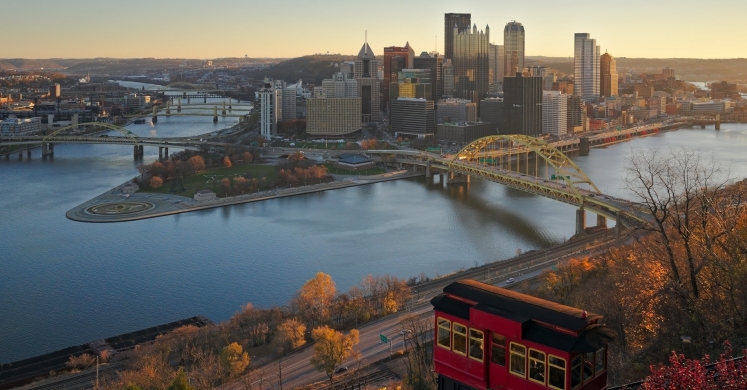Blog

#bioPGH Blog: All the Roads that Lead to the Sea
 A resource of Biophilia: Pittsburgh, #bioPGH is a weekly blog and social media series that aims to encourage both children and adults to reconnect with nature and enjoy what each of our distinctive seasons has to offer.
A resource of Biophilia: Pittsburgh, #bioPGH is a weekly blog and social media series that aims to encourage both children and adults to reconnect with nature and enjoy what each of our distinctive seasons has to offer.
Have you been to the magic of our Summer Flower Show: Under the Sea yet? While we may feel like our everyday lives here in Western Pennsylvania don't have anything to do with marine life, but they do. Quite a bit, actually. Thus, in honor of our botanical marine adventures, let’s look at the top five ways that we landlocked folks can have a direct impact on what happens in the oceans!
1.) What happens on the Mon…doesn’t stay on the Mon.
Water from Pittsburgh ends up in the ocean. The Monongahela River (a.k.a., the Mon) flows northward from headwaters in West Virginia to meet the Allegheny River in downtown Pittsburgh at the Point State Park, forming the Ohio River. The Ohio River then travels westward, forming state boundaries as it travels along Ohio, West Virginia, Indiana, Kentucky, and Illinois—eventually meeting the Mississippi River near Cairo, Illinois. From there, the Mississippi flows southward until it reaches the Gulf of Mexico. What this means is that waters from Pennsylvania will eventually travel great distances, carrying with it anything that we have allowed into our waterways. The choice is ours to be good upstream neighbors or not!
2.) Plastics Overload
An estimated eight - eleven million metric tons of plastics make it into our planet’s oceans annually in the form of everything from commercial fishing equipment to toothbrushes to plastic water bottles. These plastics damage marine habitat, enter the food web, and can hurt wildlife. The best solution is for all of us to collectively to use less plastic—especially single-use plastics. We can try to recycle when possible, but the US is struggling to recycle our plastics right now. You can make changes by opting for reusable bottles instead of bottled water and bottles of soda, bringing your own bags to the grocery store, and keeping track of where you are using the most single-use plastics – then you can identify where to start cutting back. (P.S….check out Reimagined Recycling for their collection dates of tricky materials.)
3.) Be Mindful of Sustainable Marine Products and Seafood
We can all easily do this one together: always opt for sustainable seafood. The Monterey Bay Aquarium has created Seafood Watch, a helpful guide for purchasing sustainably sourced seafood and mentions which options to avoid. Different commercial fishing methods can create by-catch, the collection of non-target marine life. Since long lines and nets are particularly dangerous, opt for pole-and-line caught options whenever possible (avoid purse seining and longline fishing). Also, when on vacation, be mindful of oceanic souvenirs like dried corals and starfish, and always avoid products made from shark materials such as oils or cartilage and shark fin soup.
4.) Act on Climate Change
Climate change is one of the biggest threats to either land or sea, but the effects are particularly devastating for the oceans and we can very clearly see that already. Ocean acidification, ocean warming, changing currents, changing wind currents, sea level rise, coral bleaching, etc. are already happening and are directly linked to climate change.
5.) Learn More About Marine Life
Our oceans are incredibly fascinating and yet mysterious – there is so much to learn and so much to still discover. One huge thing we all can do is make a concerted to learn more about the mindboggling biodiversity that lives in our salty waters. How weird are tunicates? What’s a vampire squid? How mesmerizing are moon jellies? Even of the charismatic megafauna, there are at least 73 species of toothed cetaceans, yet most of us can only name a handful, like bottlenose dolphins and orcas. Let’s expand our horizons!
The good news is that we all have the power to good upstream neighbors of our oceans, even all the way in Pennsylvania. So enjoy the fun of Under the Sea, and don’t forget how all life on earth is interconnected in this vast and wonderful ecosystem we call Earth.
Photos: Wikimedia user Dllu CC-BY-SA-4.0 and Billy Hathorn CC-BY-SA-3.0

